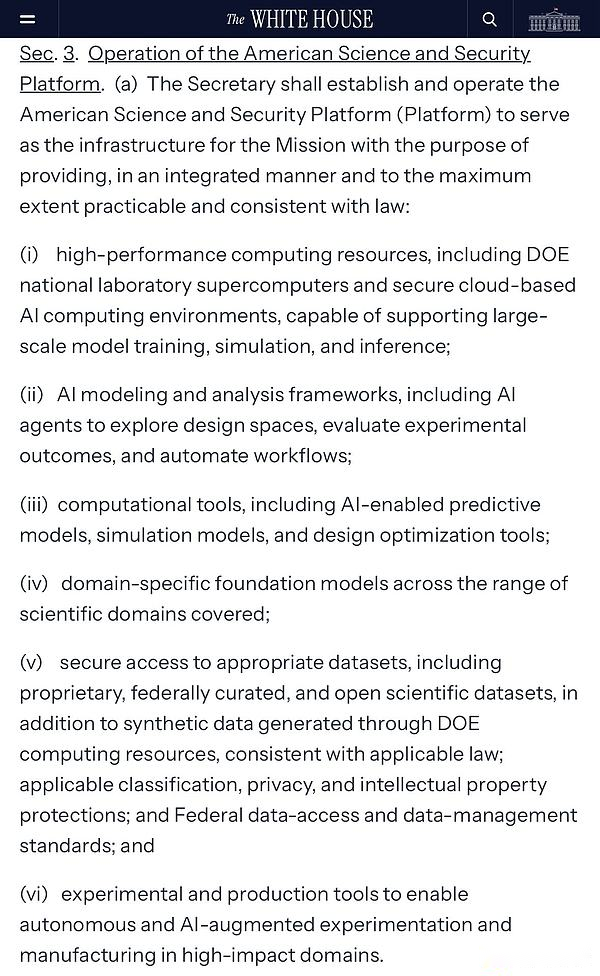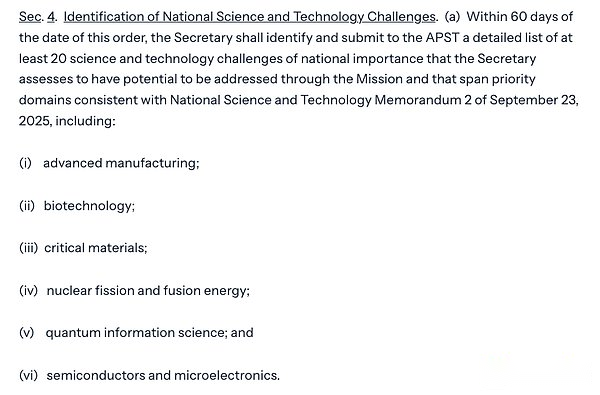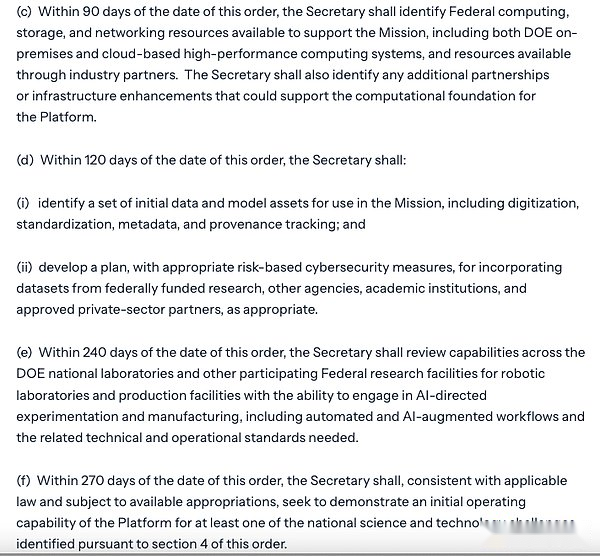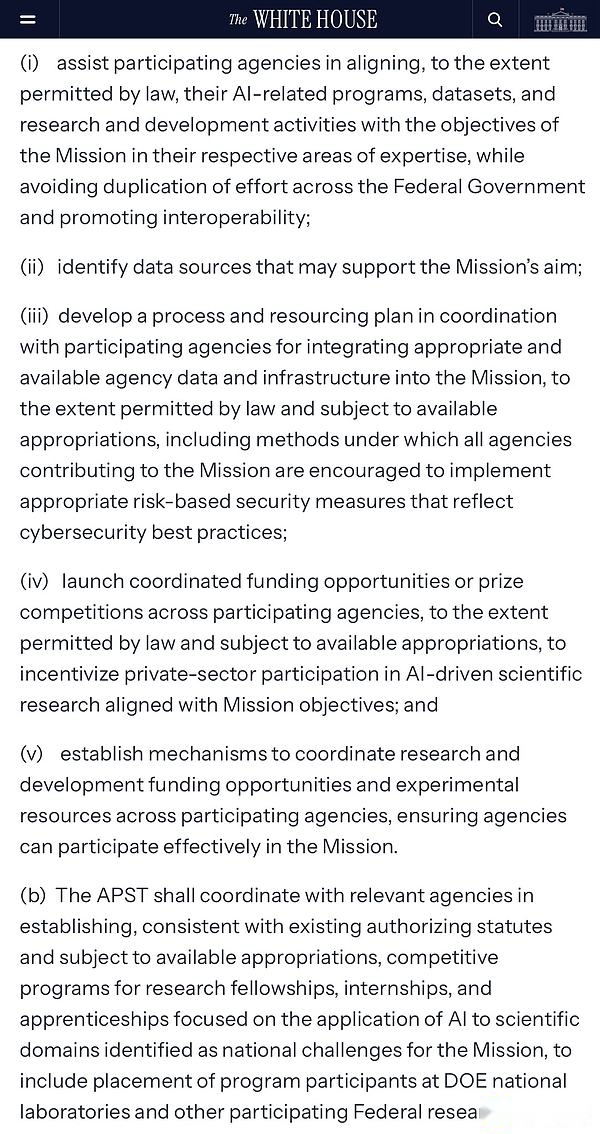
Source:Ask Perplexity;Compiled by: Bitchain Vision
The White House launched the Genesis Mission on November 24, a “Manhattan Project” in the field of AI.

The U.S. Department of Energy will build a national AI platform based on U.S. supercomputers and federal scientific data to train scientific basic models and run AI agents and robotic laboratories to automate experiments in biotechnology, key materials, nuclear fission/fusion, space, quantum and semiconductors.
Let’s break down what this plan builds and how it will reshape the landscape of AI, energy, and science over the next decade.
1. Its core is the new American Science and Security Platform (American Science and Security Platform)
The Department of Energy is directed to transform the national laboratory system into an integrated platform that provides:
-
High-performance computing (HPC) for large-scale model training, simulation, and inference
-
Basic models covering fields such as physics, materials, biology, energy, etc.
-
AI Agents for exploring design spaces, evaluating experiments, and automating workflows
-
Robotics/automated labs and production tools that support AI-guided experimentation and manufacturing
National-level “AI scientists” and “AI laboratory technicians” as infrastructure.

2. The goal is very clear and of great strategic significance
The Department of Energy must propose at least 20 “national challenges” within 60 days, covering the following areas:
-
advanced manufacturing
-
Biotechnology
-
key materials
-
Nuclear fission and nuclear fusion
-
Quantum Information Science
-
Semiconductors and Microelectronics

3. The timetable is tight enough to make an impact
-
60 days → Make a list of challenges
-
90 days → Complete inventory of federated compute/network/storage for Genesis
-
120 days → Initial model + data assets, and plans to incorporate additional datasets (other institutions, academia, private sector)
-
240 days → Map all robotics labs and automation facilities at national laboratories
-
270 days → Demonstrate initial operational capabilities on at least one challenge
Goal: Launch a fully functional scientific artificial intelligence loop within 9 months.

4. A federal AI technology stack parallel to the commercial system
The directive requires the Department of Energy (DOE) and the White House Office of Science to:
-
Integrate/align institutions’ AI projects and datasets onto the platform
-
Launch of joint funding solicitation and award program
-
Build partnership framework with external actors (including joint development agreements, user facilities, data/model sharing and intellectual property rules)
Nvidia, OpenAI, Anthropic, xAI, Google, major cloud service providers, biotechnology and chip companies have now become potential suppliers and co-developers of the Department of Energy’s AI systems.

5. Genesis marks a clear shift
Cutting-edge AI has so far been dominated by private labs.With the launch of the Genesis program, the United States is clearly establishing a state-run AI backbone network to serve the fields of science, energy, and security:
-
The Department of Energy (DOE) coordinates a national AI-for-science platform
-
National labs and supercomputers will become part of a unified AI technology stack
-
Models, agents, and robotics labs are viewed as strategic infrastructure, not just tools
The question now is: Who will provide the computing power and models?How will intellectual property (IP) and data be shared?and how quickly other countries will roll out their own Genesis-style plans.







